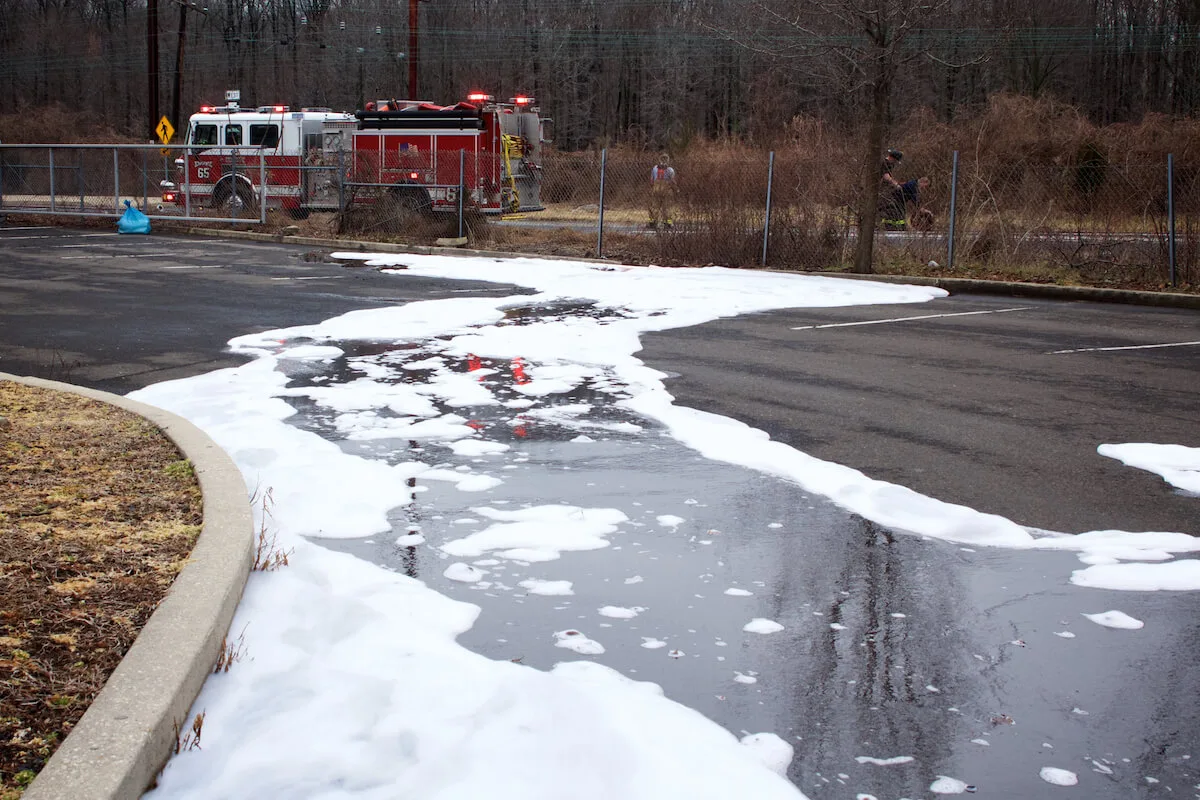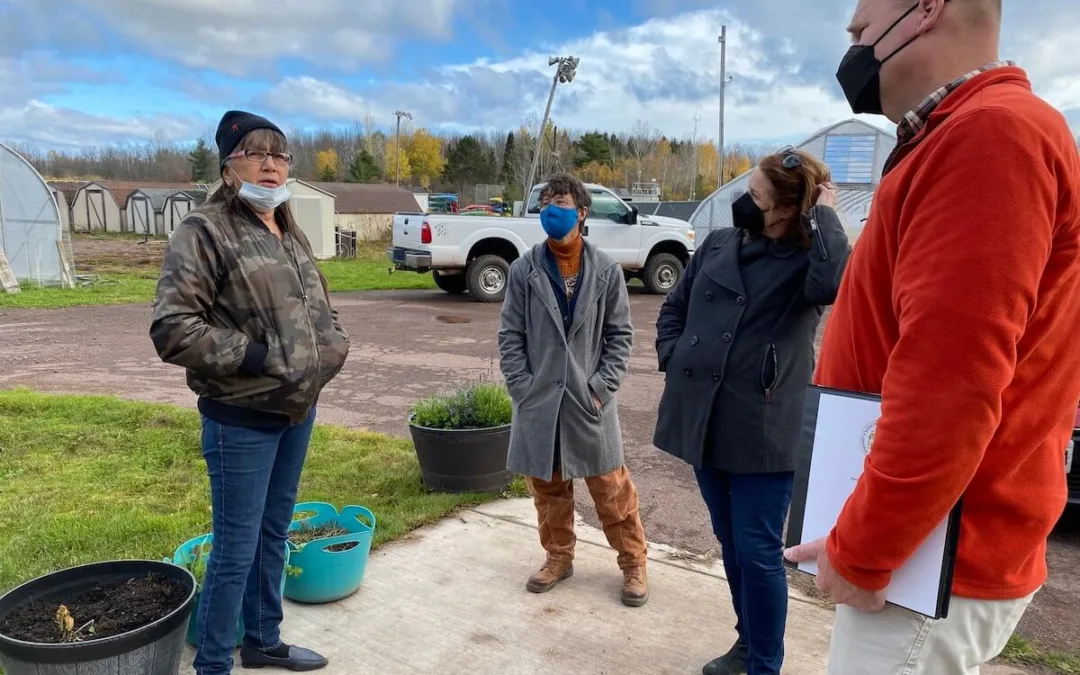
#image_title
#image_title
Delay in writing rules prevents even a modest step toward better containment and disposal of hazardous firefighting foam.
A decision by the Wisconsin Department of Natural Resources Board Wednesday to delay temporary regulations on the use and storage of firefighting foam containing hazardous compounds known as PFAS is a sign of big business interests winning out over the environment, environmental organizations said.
Citing concerns expressed by Wisconsin Manufacturers & Commerce and other pro-business organizations, the board voted unanimously to table a rule that would have set guidelines for containment and disposal of the substances known as “forever chemicals.” PFAS have been linked to cancer and other illnesses.
The board received an Aug. 7 letter from Wisconsin Manufacturers & Commerce, Wisconsin Paper Council, Midwest Food Products Association, Wisconsin Civil Justice Council, and Wisconsin Water Alliance objecting to limiting the amount of PFAS in wastewater.
The Wisconsin Water Alliance is an industry-created group which opposes water regulations and is currently led by former Republican Assembly Speaker Mike Huebsch.
Despite their danger to public health, PFAS remain unregulated in Wisconsin, and the fact that corporate interests stymied DNR action to address the dangerous compounds, at least for now, sends a disappointing signal, said Carly Michiels, government relations director for the environmental group Clean Wisconsin.
“It’s extremely disappointing that the (Natural Resources Board) did not pass what would be the only protections in Wisconsin from PFAS pollution,” Michiels said. “They were swayed because industry stepped in at the very last minute once again pitting profit against public health.”
The bill that Gov. Tony Evers signed into law banning PFAS in firefighting foam used in training was criticized at the time as weak and already an industry best practice, Michiels said.
“The fact that this minimal effort cannot even get past the final hurdle in the process is disappointing,” she said.
Peg Sheaffer, director of development and communications with Midwest Environmental Advocates, said she is optimistic the Natural Resources Board will address PFAS regulations appropriately.
“But we’re concerned that industry is attempting to exert an unreasonable amount of influence over this process,” she said. “This is a matter of public health. People’s lives are at stake.”
The rule was proposed in response to bipartisan legislation approved last year that restricted the use of fluorinated foam to use only in emergency situations and at training sites the DNR determines to have needed containment, treatment and disposal capabilities.
State law requires the DNR to adopt emergency rules by Sept. 7 that would remain in effect for three years, or until the agency can adopt permanent rules. But with the rule tabled until at least the board’s Sept. 22 meeting, the law will take effect Sept. 1 without containment and disposal measures being defined.
The issue of regulating PFAS comes after a July 26 spill at the Marinette plant of Tyco Fire Protection Products, a subsidiary of Johnson Controls, where firefighting foam is produced. The spill sent water contaminated with PFAS and arsenic into the Menominee River.
Wisconsin Manufacturers Commerce and other industry groups said the DNR’s PFAS proposal amounts to a regulatory overreach by the agency.
“We are deeply troubled that the proposed effluent limits for fourteen different PFAS compounds are not based on science, have not been reviewed by the Department of Health Services, have not been discussed with the general public, and would place Wisconsin in the position of being regulatory outlier,” those groups stated in its letter to the Natural Resources Board.
State Sen. Steve Nass and Rep. Joan Ballweg, who co-chair the Legislature’s Joint Committee for the Review of Administrative Rules, expressed similar concerns in a letter to the board and said the DNR’s proposal would exceed its authority regarding PFAS.
But Kayla Furton, a member of the Marinette-based group SOH20 (Save Our Water) that organized because of PFAS concerns, said the bill has little to no effect without regulations preventing PFAS contamination in wastewater. Like Michiels, she expressed disappointment at the Natural Resources Boards’ backing down in the face of industry pushback.
“Without those sanitary sewer regulations in place, this is completely benign,” Furton said. “We have seen the results of the flushing of PFAS into sewer drains here in the Marinette area. It has caused so much damage. We don’t want to see that happen in other areas.”
Postponement of items for discussion at Natural Resources Board meetings is not uncommon, DNR spokeswoman Megan Sheridan said. Board members are speaking with stakeholders and plan to act on PFAS regulations at the September meeting, she said.
The DNR is monitoring about 30 PFAS contamination sites across Wisconsin, most of which can be traced to firefighting foam.
“The DNR is committed to addressing the issue of PFAS contamination in Wisconsin,” Sheridan said.
Four years ago Furton, her husband, and their three children moved to her childhood home in the town of Peshtigo, one mile south of Marinette. Two years later they learned their property is in an area contaminated by PFAS, and they have used bottled water since. Much of the Marinette area has been polluted by PFAS.
“We’re worried about ourselves and our kids, and for all of the families in our community,” she said. “The people living here have been exposed to this for years. We need protections.”
Politics

New Biden rule protects privacy of women seeking abortions
Under the new rules, state officials and law enforcement cannot obtain medical records related to lawful reproductive health care with the goal of...

Biden marks Earth Day by announcing $7 billion in solar grants
The Biden administration on Monday announced the recipients of its Solar For All Program, a $7 billion climate program that aims to lower energy...
Local News

Stop and smell these native Wisconsin flowers this Earth Day
Spring has sprung — and here in Wisconsin, the signs are everywhere! From warmer weather and longer days to birds returning to your backyard trees....

Your guide to the 2024 Blue Ox Music Festival in Eau Claire
Eau Claire and art go hand in hand. The city is home to a multitude of sculptures, murals, and music events — including several annual showcases,...




